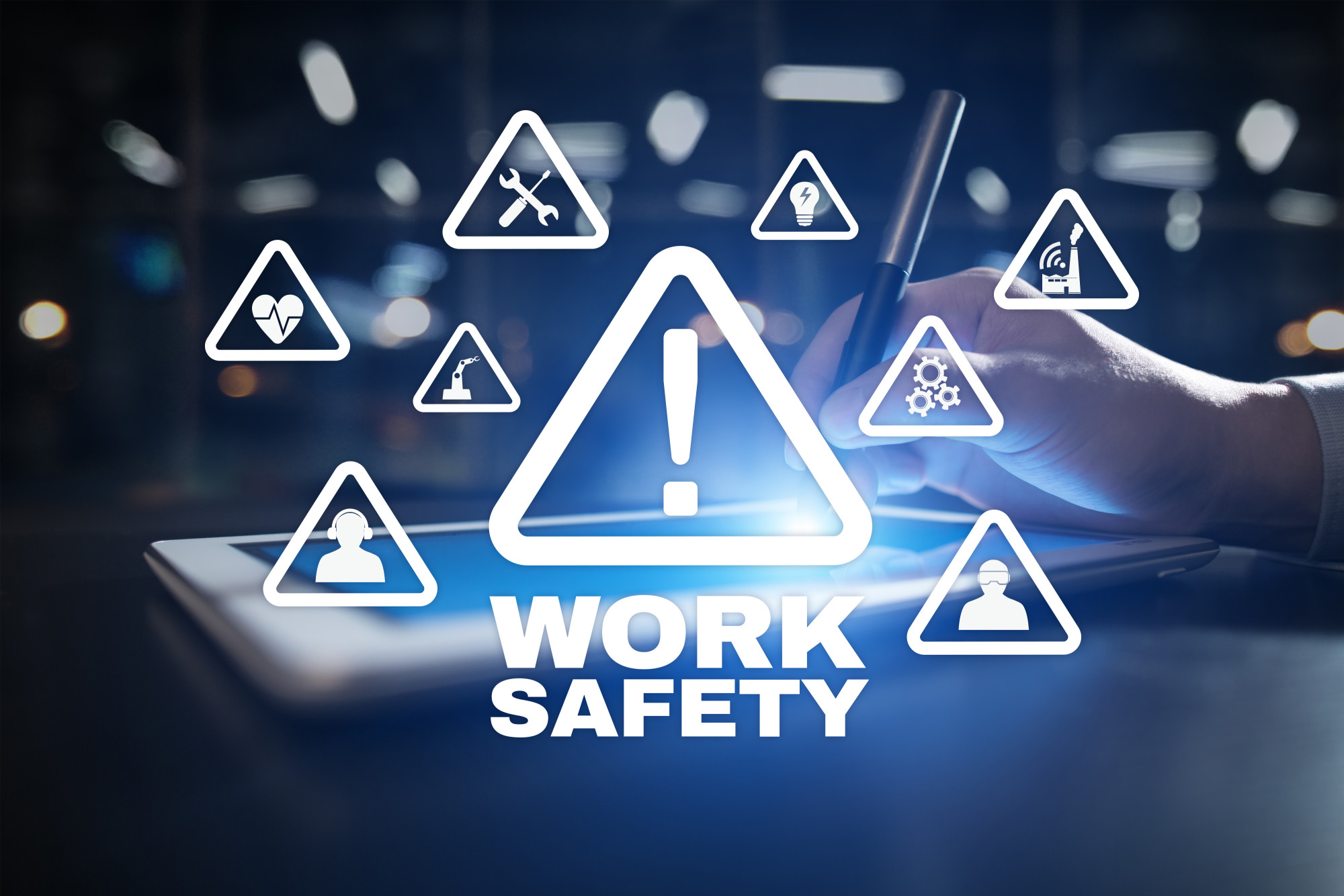It’s hard to believe that it’s been ten years since the Occupational Safety and Health Administration (OSHA) released its updated guidelines for employee safety.
In light of recent events, it’s more important than ever for businesses to ensure that their employees are safe on the job. Whether you’re just starting out or you’ve been in business for years, it’s vital that you know about OSHA’s guidelines and how to put them into practice.
In this guide, we’ll discuss everything you need to know about employee safety in 2022.
Keep reading to discover everything you need to know about a safe work environment.
What Is Employee Safety?
Employee safety is a term that encompasses all the measures taken to protect employees from harm while they’re on the job. This includes everything from providing proper training to using the right safety equipment.
It’s important to remember that employee safety isn’t just about preventing accidents. It’s also about protecting employees from health hazards and other risks.
Furthermore, employee safety is not just the responsibility of the employer. Employees also have a role to play in keeping themselves safe on the job.
By understanding the risks involved in their work and taking steps to mitigate those risks, employees can help create a safer workplace for everyone.
Which Parameters Represent Employee Safety?
There are four main parameters that represent employee safety:
Physical safety is the protection of employees from physical hazards such as slips, trips, and falls. It also includes the use of personal protective equipment (PPE) to protect employees from injuries.
Mental safety is an aspect of business structure for employees from mental health hazards such as stress, burnout, and anxiety.
Chemical safety protects employees from hazardous chemicals used in the workplace. This includes everything from proper storage and labeling of chemicals to providing employee training on how to safely handle them.
Biological safety has to do with security practices for biological hazards. Biological safety also includes measures taken to prevent the spread of infectious diseases.
Why Is Employee Safety Important?
There are many reasons why employee safety is important. Perhaps the most important reason is that it’s simply the right thing to do.
Your employees are your most valuable asset. It’s your responsibility to ensure that they’re safe while they’re working for you.
Not only is it morally imperative that you protect your employees, but it’s also good for business. A safe workplace is a productive workplace. Happy, healthy employees are more likely to stick around.
In addition, protecting your employees from harm can help you avoid legal problems. If an employee is injured on the job, they may be entitled to workers’ compensation benefits.
Additionally, if an employee sues you for negligence, you could be facing a settlement. By taking steps to ensure that your workplace is safe, you can protect yourself from these scenarios.
The Consequences of Not Ensuring Employee Safety
If you don’t take steps to ensure employee safety, you could be facing some serious consequences.
First and foremost, your employees could be injured or even killed while on the job. This would not only be tragic for them and their families, but it would also be a huge financial burden for your business.
In addition, if one of your employees sues you for negligence, you could end up paying a large settlement. Not to mention, if OSHA finds that your workplace is unsafe, you could be fined or even shut down.
Moreover, if word gets out that your workplace is unsafe, it could damage your reputation. This would make it difficult to attract new employees and customers. In short, not taking steps to ensure employee safety is simply not worth the risk.
Should Employees Help Ensure Safety for Other Employees?
Most employers would say that it is the responsibility of management to ensure employee safety. However, employees also have a role to play in making sure that the workplace is safe.
By understanding the risks involved and taking steps to mitigate those risks, employees can help create a safer workplace.
In order to educate your employees, you can provide them with safety training. This can be in the form of online courses, classroom instruction, or on-the-job training.
Additionally, you should make sure that your employees have access to safety information, such as MSDS sheets and hazard warning signs.
However, even with the best training and information in place, accidents can still happen. That’s why it’s important to have a safety plan in place that includes procedures for reporting accidents and injuries.
By having a solid safety plan in place, you can help ensure that your workplace is as safe as possible.
What Is SDS Management?
SDS management is a term that refers to the process of creating, organizing, and maintaining safety data sheets (SDSs).
SDSs are documents that contain information about the hazards of chemicals in the workplace. They also provide instructions for safe handling and use.
All employers who use hazardous materials must have SDSs for each substance they use.
Organizing and maintaining SDSs can seem like a daunting task. There are many software programs and services available to help make the process easier. In addition, OSHA offers a free online database of SDSs that can be searched by chemical name or product number.
By taking advantage of these resources, you can ensure that your employees have quick and easy access to the information needed.
How to Implement Employee Safety Procedures
Now that you know a bit more about employee safety, let’s discuss how you can put these concepts into practice in your own workplace. Here are a few tips to get you started.
Provide Adequate Training
Employees should be properly trained on how to perform their jobs safely. This training should be ongoing and specific to each employee’s role.
Besides that, employers should also provide their employees with general safety training. This can include topics like how to prevent slips, trips, and falls; how to lift properly; and what to do in the event of a fire.
In addition, employers should make sure that their employees have access to safety information. For example, SDS sheets and hazard warning signs.
Conduct Regular Safety Audits
Periodically assessing your workplace for hazards is an important part of maintaining a safe environment. Be sure to involve employees in these audits so that they can provide valuable input.
Furthermore, establish a system for reporting hazards and near-misses. This will help you identify and correct potential problems before they result in an accident.
Encourage Reporting
Encourage employees to report any unsafe conditions or practices they observe. This will help you identify and correct potential hazards before they cause an accident.
Additionally, establish a system for reporting accidents and injuries. This will help you investigate the cause of the accident and take steps to prevent future incidents.
Create a Safety Policy
The next step is to create a safety policy for your workplace. This document should outline your commitment to employee safety and list the specific procedures you will put in place to ensure a safe work environment.
Develop Procedures and Policies
Put your commitment to employee safety in writing by developing policies and procedures for your workplace. Be sure to review these regularly and update them as needed.
Moreover, make sure that all employees are aware of these policies and procedures. Conduct regular training sessions to ensure that everyone is up-to-date on the latest safety information.
By following these tips, you can create a safer workplace for your employees. Remember, employee safety is not something that should be taken lightly. It’s essential to the success of your business.
What Are OSHA’s Guidelines?
OSHA’s guidelines are designed to help employers create safe workplaces for their employees. The guidelines cover a wide range of topics. Some of them are safety training, hazard identification, and emergency preparedness.
In addition, the guidelines provide specific recommendations for different industries and occupations. For example, OSHA’s guidelines for construction workers are different from the guidelines for office workers.
It’s important to note that OSHA’s guidelines are not mandatory. However, if you choose to follow them, you can help create a safer workplace. It will also help avoid potential legal problems down the road.
Additionally, many insurance companies offer discounts to businesses that follow OSHA’s guidelines.
What Are the OSHA Guidelines for Employee Safety?
The Occupational Safety and Health Administration (OSHA) is a federal agency. It sets and enforces safety standards in the workplace.
OSHA’s guidelines for employee safety are outlined in the Code of Federal Regulations (CFR). This is updated on a regular basis.
Some of the most recent changes to the CFR were made in 2016. They focus on protecting employees from health hazards. For instance, exposure to hazardous chemicals and noise levels can lead to hearing loss.
In addition to guidelines, OSHA also has industry-specific standards that businesses must follow. These standards are designed to address the unique risks associated with each industry.
For example, the construction industry has standards that focus on preventing falls from heights. Whereas, the healthcare industry has standards addressing hazardous materials and infectious diseases.
How Can You Implement OSHA’s Guidelines?
There are many ways to implement OSHA guidelines in your workplace. One of the best ways is to provide safety training for your employees.
This training should cover topics like hazard identification and emergency procedures. In addition, you should make sure that your employees have access to the proper safety equipment, such as gloves, goggles, and respirators.
You should also develop a written safety policy that outlines your commitment to employee safety. This policy should be reviewed and updated on a regular basis.
Finally, you should make sure that your employees know how to report unsafe conditions or accidents. By taking these steps, you can help create a safe workplace for your employees.
Should You Outsource Employee Safety Management Services?
Many businesses choose to outsource employee safety management services. This can be a good option if you don’t have the time or resources to manage employee safety yourself.
However, it’s important to choose a reputable company that has experience. Additionally, you make sure that the company you choose is up-to-date on OSHA standards.
Outsourced services for employee safety prove to be beneficial for businesses. It maintains compliance with standards set by OSHA without dedicating resources.
When looking for a safety management service, be sure they have experience in the industry. They must also be up to date on the latest OSHA standards.
Furthermore, it is important that your safety policy is reviewed and updated regularly. Your employees should also know how to report unsafe conditions or accidents. By taking these steps, you can help create a safe workplace for your employees.
The bottom line is that employee safety should be a top priority for all businesses.
Employee Safety Done Right
Employee safety is important for many reasons. Perhaps the most important reason is that it’s simply the right thing to do.
Your employees are your most valuable asset. It’s your responsibility to ensure that they’re safe while they’re working for you.
Luckily, there are many things you can do to create a safe workplace. For instance, providing safety training and making sure that your employees have access to safety equipment. By taking these steps, you can help create a safe workplace for your employees.
If you’re interested in taking your employee safety to the next level with some assistance, get in touch with us and we will accommodate your needs.


